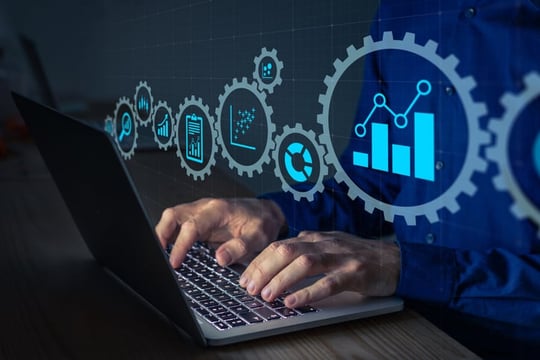GPS trackers are used for non-powered asset tracking by attaching the tracker to the asset, such as a piece of equipment or a container. The tracker will then use satellite technology to track the location of the asset in real time, allowing the user to monitor its movement and location.
Why Asset Trackers?
Stolen equipment is one of the worst things that can happen to a business; asset theft is on the rise worldwide. In early 2023, over half a million dollars' worth of stolen construction equipment was recovered in a Chicago suburb after one clever business owner tracked down his stolen $95,000 Bobcat Skid-Street loader and discovered a warehouse full of other equipment including a concrete dumpster and truck trailer.
It is tough to track down stolen equipment, but an asset tracker can make all the difference. An asset tracker can help you avoid this stress by always knowing where your equipment and assets are.
A GPS asset tracker allows business owners to quickly identify each asset's last location and review past location history. And by setting up powerful alerts that report on movement, activity, geofences, and more it becomes instantly easier to stay updated on how and when your assets are used.
Asset Tracking Examples
GPS asset trackers are lightweight and powerful tools for locating valuable equipment. The location tracking devices can be used for any type of equipment, whether powered or non-powered. Here are some examples of using asset trackers for non-powered tracking.
- Shipping containers
- Rental equipment
- Trailers
- Lawncare equipment
How to Use GPS Trackers for Asset Tracking
To use GPS trackers for non-powered asset tracking, follow these steps:
- Choose a GPS tracker for your non-powered equipment or asset
- Attach the GPS tracker to the asset
- Activate and test the device to ensure it is operating as expected
- Login to the asset tracking software and begin monitoring
Choose a GPS tracker suitable for the type and size of the asset you want to track. Make sure the tracker is small and lightweight enough to attach to the asset easily and has a long battery life.
Attach the GPS tracker to the asset, following the instructions provided. This may involve adhesive tape, straps, or other methods to attach the tracker to the asset securely.
Activate the GPS tracker by turning it on manually or using a remote activation method. This will allow the tracker to begin transmitting location data to the user.
Monitor the location of the asset in real-time using the tracking software provided by the manufacturer. This may involve logging in to a web-based interface, downloading a mobile app, or accessing the tracking data.
Use the tracking data to monitor the asset's movement and ensure it is used and transported efficiently. This may involve identifying usage patterns, areas where the asset may be idle or underutilized, or using the data to make other decisions about how to manage the asset best.
Using GPS trackers for non-powered asset tracking can be a game changer and allows businesses to monitor and manage their assets more effectively. By attaching a GPS tracker to the asset and tracking its location in real time, companies can gain valuable insights and make more informed decisions about utilizing their assets.
Are you interested in learning more about Linxup asset trackers? Learn more and schedule a call with a Linxup representative. Feel free to contact our friendly sales team; reach out to us by clicking here on your phone or dialing: 1-877-907-0801.
Explore Linxup Asset Trackers: Daily Tracker ATLT | Wired Tracker AT3 | Solar Tracker


